Insights and Opportunities in the Wing Foil Market
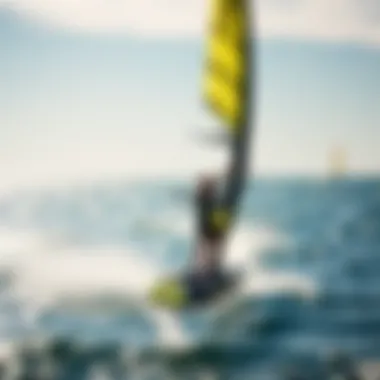
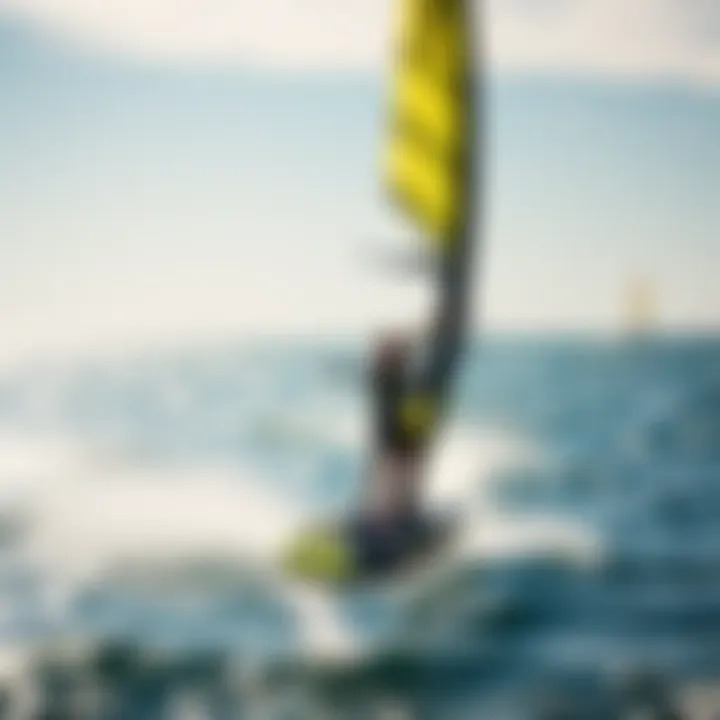
Intro
The wing foil market has surged in popularity, capturing the attention of not only seasoned kiteboarders but also newcomers eager to embrace the latest trends in water sports. As enthusiasts gear up to surf the waves with wings guiding their glide, understanding the essentials of gear selection and skill development becomes paramount. This comprehensive guide aims to dissect the intricacies of the market, exploring trends and consumer preferences that shape the current landscape.
For potential buyers, navigating through a plethora of choices can feel overwhelming. Each piece of gear—from kites to boards—offers its own set of advantages and disadvantages. Let’s dive into the nitty-gritty of selecting the right equipment and honing your skills, ensuring that both novices and seasoned veterans can make informed decisions and enjoy their time on the water.
Gear Selection
Types of Kites
When entering the world of wing foiling, the kite is, without a doubt, one of the most critical components to consider. There are various types of kites suited to different conditions and preferences. Here are the main types:
- Inflatable Kites: Often favored for their versatility, inflatable kites offer superior stability in gusty winds and are easier to control.
- Foil Kites: On the other hand, foil kites are known for their efficiency and are preferred for light wind conditions because they require less wind to generate lift.
Selecting the right kite isn�’t just about the type; it’s also about size. You've got to match the kite's size to your weight, skill level, and the wind conditions you typically encounter. For instance, lighter riders may benefit from smaller kites in strong winds, while heavier riders might need larger kites in lighter breezes.
Choosing the Right Board
Just as crucial as the kite is the board you’ll ride. Boards come in various shapes and sizes, which can significantly affect your overall experience.
When selecting a board, consider:
- Size: Longer boards typically offer more stability, while shorter ones provide agility and faster turnover.
- Volume: Higher volume boards are better for beginners since they offer easier take-offs and a more forgiving ride.
- Material: Boards made from different materials vary in durability and weight. Some are lighter, enhancing maneuverability, while others are sturdier for rougher conditions.
It’s advisable to try out various boards to find one that feels most comfortable and suits your riding style. Remember, the best board for you is the one that feels right under your feet.
Skill Development
Essential Techniques
Mastering wing foiling requires patience and practice. As you venture into the water with your kite and board, focus on the fundamental techniques:
- Balancing: Get a feel for balancing on the board before even considering taking off. This is a key aspect of wing handling.
- Wing Control: Learn to maneuver the wing for efficient power generation, understanding how to use the wind to your advantage.
- Take-Off: Start on flat water and practice the take-off motion, gradually increasing your speed as you become more comfortable.
Progression Tips
As you become more confident, you can begin to explore the next level of skills:
- Jumps and Tricks: Once you can take off consistently, start attempting small jumps. Don’t rush; it’s important to build a solid foundation.
- Downwind Riding: This technique allows you to ride using less power, offering a different challenge to your skills.
- Riding in Different Conditions: Try riding in varied wind and wave conditions to enhance your adaptability.
"The only limits we have are the ones we place on ourselves."
By focusing on these essential techniques and gradually building your skillset, you'll find yourself progressing and finding greater joy in the sport.
Finale
As the wing foil market continues to grow, understanding gear selection and honing your skills becomes more critical than ever. The right equipment paired with a committed approach to skill development ensures that you’ll enjoy the waves, whether you’re a seasoned pro or just dipping your toes into the water. Grab your gear, hit the waves, and enjoy the exhilarating ride that wing foiling offers.
For more information on gear and techniques, consider visiting resources like Wikipedia, or engaging with communities on Reddit and Facebook.
Stay tuned for more insights and opportunities within this exciting market.
Preamble to Wing Foiling
Wing foiling has quickly carved out a niche in the realm of water sports, becoming a vital topic for enthusiasts, instructors, and competitors alike. As the sport intertwines elements of windsurfing, kiteboarding, and traditional surfing, it offers newcomers and veterans a unique avenue for exploration and expression on the water. In this fast-evolving market, understanding the nuances of wing foiling is crucial not just for personal enjoyment but also for making informed purchasing decisions.
Understanding the Basics of Wing Foiling
At its core, wing foiling involves a lightweight wing that a rider holds while being propelled forward by wind. The rider is typically mounted on a board equipped with a foil—an underwater wing that lifts the board above the surface. This design allows for impressive speeds and a surreal experience of gliding above the water.
A key aspect that stands out is the flexibility offered by wing foiling. Riders can be free to explore various environments, from flat lakes to choppy oceans, without needing the complex setup typically associated with kiteboarding or windsurfing. This accessibility makes wing foiling particularly appealing to a broad range of ages and experience levels.
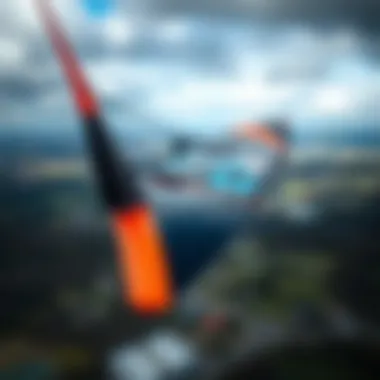
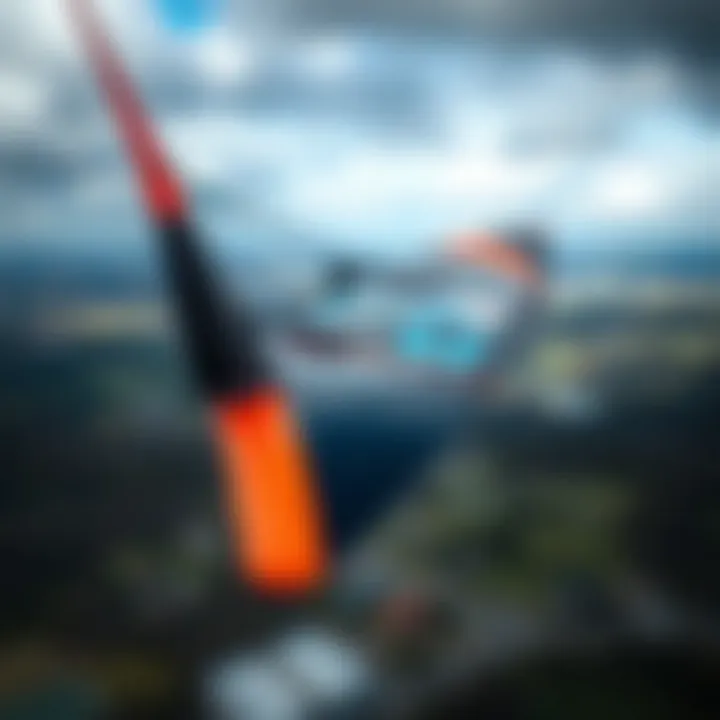
Furthermore, the setup and equipment required for wing foiling are relatively simple when compared with other water sports, which lowers the barrier for entry and encourages more participation, expanding the activity's community.
Historical Context and Emergence
The emergence of wing foiling can be traced back to the innovative spirit of water sports enthusiasts who seek new thrills. While it may appear to be a recent phenomenon—gaining substantial traction over the past few years—it actually draws influence from earlier sports: windsurfing and kiteboarding have had their role in shaping how this sport developed. Adapting existing technologies, riders began to experiment with inflatable wings that could be held independently of a board and controlled with ease.
By the late 2010s, wing foiling began to gain momentum, thanks in part to the efforts of influencers in the water sports community showcasing the excitement through social media platforms like Instagram and YouTube. The result was a surge of interest, prompting manufacturers to dive headfirst into production and innovation.
Now, as we step into a more globalized market with online sales, wing foiling has transitioned from niche to mainstream, offering new opportunities for brands and expanding its audience even further.
"With the continuous evolution of gear and a growing community, wing foiling is more than just a trend; it’s a redefined approach to water sports that invites everyone to join the fun."
In summary, the introduction to wing foiling provides key insights into an exhilarating sport that is steeped in history yet spans the spectrum of possibility for future adventurers. By understanding the basics and recognizing the historical context, participants can appreciate the sport's significance—and make better choices, whether they are new buyers or seasoned pros.
Market Overview of Wing Foil Sales
Understanding the landscape of wing foil sales speaks volumes about the dynamics of the water sports market. The growth of this niche, fueled by an ever-expanding community of enthusiasts, underlines the increasing popularity of wing foiling as both a recreational activity and a professional sport. A thorough examination of sales trends, regional patterns, and emerging demographics can provide insight into not just where the market is now, but also where it's headed. This also highlights potential market opportunities for sellers and manufacturers keen on tapping into the wing foil action.
Current Market Trends
Currently, the wing foil market is seeing a notable shift. More riders are transitioning from traditional kiteboarding to wing foiling, attracted by its unique blend of simplicity and excitement. Social media has played a pivotal role in this growth. Riders flaunt their skills on platforms like Instagram and Facebook, showcasing the thrill of wing foiling, which has, in turn, sparked interest among spectators who are now potential buyers.
Another trend worth noting is the surge in demand for eco-friendly materials in wing foil construction. Given the rising awareness about environmental sustainability, consumers are increasingly looking for equipment made from recycled or sustainable resources. Thus, brands that prioritize this aspect are naturally gaining traction in the market.
Sales Performance Analysis
Regional Sales Patterns
Diving deeper into regional sales patterns reveals some significant insights. For example, areas like California and Hawaii boast a high concentration of wing foil enthusiasts. These regions enjoy favorable wind conditions almost year-round, making them prime territories for sales growth. Contrarily, places with harsher weather patterns have lower sales figures. This delineation not only highlights geographical popularity but also indicates where marketing strategies might need to be adapted.
Each region’s unique climate and local culture play a role in shaping sales figures. In California, for instance, wing foiling is often associated with beach culture and outdoor lifestyle, thus attracting leisure-oriented buyers looking for thrilling water activities. This is in stark contrast with regions where water sports may not be considered a primary recreational activity. Understanding these regional nuances can provide retailers a competitive edge in tailoring their offerings.
Consumer Demographics
When we talk about consumer demographics in the wing foil market, several pivotal factors come into play. The typical demographic skews younger, often encompassing those aged 18 to 35 who are more inclined to adopt new sports trends. This demographic is not only tech-savvy but also increasingly influenced by online content and peer recommendations.
Interestingly, while younger individuals dominate sales figures, there’s also a noticeable uptick in interest from older generations looking to explore new hobbies. Companies can tap into this by crafting marketing strategies that resonate with various age groups, thereby expanding their consumer base. Moreover, offering different product lines targeting both seasoned professionals and beginners is a plus that many brands are taking advantage of to cater to this diverse audience.
Seasonal Variations
Next comes the examination of seasonal variations, crucial for planning sales strategies. During summer months, sales typically see a spike due to favorable weather conditions and school vacations. As families hit the beach, the interest in water sports naturally accelerates. However, what’s intriguing is the winter season, where demand doesn’t completely dwindle. Instead, colder regions may see a renaissance as adventurous types seek new ways to experience winter sports through wing foiling.
This seasonal aspect requires businesses to be astute in inventory and marketing - recognizing peak demand and off-peak lull, but also tapping into year-round enthusiasts who may seek gear and training sessions even when the weather isn't perfect for flying on water. Retailers can enhance their sales strategies by offering off-season deals or showcasing potential winter wing foiling activities.
Key Factors Influencing Retail Sales
Understanding the dynamics of retail sales in the wing foil market is not just important; it's essential for any stakeholder aiming to make a mark in this growing segment. Several interrelated factors play a crucial role in shaping purchase decisions, and being aware of them can sharpen your competitive edge as a buyer or seller. This section dissects the economic influences, technological advancements, and shifting consumer preferences that together paint a clear picture of the current landscape in wing foiling.
Economic Influences
The economic climate has a profound impact on consumer spending habits. In categories like water sports equipment, shifts in disposable income can make or break sales. For instance, during economic downturns, buyers tend to hold tight to their wallets, often prioritizing essential expenditures over leisure items like wing foils. Conversely, in a thriving economy, there's an inclination to invest in recreational activities that promote a healthy lifestyle.
Moreover, inflationary pressures can affect material costs, leading to price adjustments in products. If manufacturers face increased costs in sourcing components or materials, they may pass these expenses onto consumers. It’s a balancing act; companies need to price their products competitively without sacrificing quality, and consumers are always on the lookout for the best bang for their buck.
Further, exchange rates can also impact the prices of imported wing foils. International brands that source or assemble their products overseas might see changes in profit margins or retail prices as currencies fluctuate. This is particularly noticeable in regions where the wing foil market relies heavily on foreign brands. In short, a keen understanding of economic factors is crucial for analyzing market trends.
Technological Advancements in Wing Foils
Tech plays a key role in modern wing foiling, and innovation drives consumer desire. Advances in design and materials have given rise to more efficient wing foils that offer better performance. For instance, the evolution from traditional materials to lighter composites allows for enhanced maneuverability and durability.
Additionally, features like adjustable masts and wings that can adapt to varying wind conditions create a more versatile experience for users. Brands that stay ahead of the curve often capture market share because they provide options that meet empirical demands — a necessity for the serious kiteboarding enthusiast.
Moreover, integration of smart technology into wing foils, such as sensors for tracking performance metrics, adds an appealing layer of functionality. As the market becomes more competitive, the capacity to innovate could set brands apart. In this age, where the latest and best are always in high demand, a brand that neglects technological evolution risks falling behind.


Consumer Preferences and Trends
Consumer preferences in wing foiling are anything but static. Today’s buyers are more informed and discerning than ever. They question not just the immediate performance of the wing foil but also its sustainability and ethical production practices. Values-driven purchasing is on the rise, and brands that align with these values often form stronger connections with their customers.
Social media platforms like Instagram and TikTok play a significant role in shaping preferences. The visual nature of these mediums gives brands an opportunity to showcase their offerings in action, influencing consumer perceptions and driving interest. Strong brand stories, professional endorsements, and user-generated content play a pivotal role in developing brand loyalty.
In many cases, reviews and testimonials heavily influence purchase decisions. Word-of-mouth, particularly from trusted sources within the kiteboarding community, can be a game-changer. As a result, companies need to focus on maintaining positive relationships with customers post-purchase and encourage feedback actively.
"The wing foil market is not just about the product; it’s about community and values. Consumers want to feel like they are a part of something bigger than just recreation."
Ultimately, understanding these factors—economic influences, technological advancements, and consumer preferences—enables sellers to tailor their strategies effectively and meet the market's dynamic demands.
Types of Wing Foils Available
Understanding the different types of wing foils is crucial for anyone venturing into this exciting aspect of water sports. The variety caters to diverse needs, skills, and preferences among riders. A well-chosen wing foil not only enhances performance but also significantly contributes to the overall enjoyment of the experience on the water.
Different Designs and Their Uses
Wing foils come in various designs, each tailored for specific conditions and user skill levels. Factors such as size, aspect ratio, and outline shape define how a foil performs in distinct water conditions.
- Flat Wing Designs: These are known for their stability and are often favored by beginners. They provide a larger surface area, making it easier to lift off from the water. Ideal for light wind conditions, they offer paddlers enough lift as they learn the ropes.
- High Aspect Wings: For the more advanced riders, high aspect ratio wings are where it's at. Their elongated shape allows for increased speed and better glide through the water. These designs are particularly suited for racing or riding in stronger winds, supporting maneuvers that require precision and agility.
- Delta Shapes: This design provides a balance between lift and speed. With a wider base, delta-shaped wings are versatile and can perform well on flat as well as choppy waters. They suit a range of skill levels, making them a popular choice for many.
"Choosing the right wing design is the cornerstone of a great foiling adventure. It's not just about the ride—it's about finding gear that resonates with you."
Material Composition and Durability
The materials used in wing foils can influence not only the performance but also the lifespan of the gear. Most wings are crafted from a variety of materials that provide strength, weight reduction, and resistance to wear.
- Rigid Wings: Typically constructed from carbon fiber or fiberglass, these offer superb stiffness and lightweight characteristics. Rigid wings are revered for their durability, although they come at a premium cost. These are particularly favored by competitive riders who need race-ready gear.
- Inflatable Wings: Many beginners gravitate towards inflatable options due to their forgiving nature and ease of transport. Made of high-quality nylon or similar synthetic materials, they are designed to withstand minor bumps and scrapes in various conditions. However, they might not be as responsive in demanding environments compared to their rigid counterparts.
- Hybrid Options: Some brands offer wings that blend rigid frames with inflatable edges. This fusion aims to provide the best of both worlds—lightweight, durable, and easy to handle. These wings can often adapt to different styles of riding.
Performance Ratings of Various Models
When evaluating wing foils, performance ratings become an essential criterion. Riders should consider how different models compare based on factors such as speed, lift, and maneuverability. Here’s a brief look at what to prioritize:
- Speed: Some foil designs excel in speed, which is vital for racing and advanced maneuvers. High aspect ratio wings generally score better in speed ratings as they allow for more streamlined movement.
- Lift: Look for wings that provide a solid lift in light winds. A good lift ratio enables riders to catch breezes effortlessly and makes for a smoother overall ride.
- Maneuverability: For freestyling or tight turns, the maneuverability of a foil is crucial. Models that offer quicker responses help riders perform tricks and navigate around obstacles effectively.
Each of these aspects plays a pivotal role when it comes to selecting the perfect wing foil model. Understanding these factors not only aids in making an informed decision but strives to elevate the entire riding experience.
Evaluating Wing Foil Brands
In the world of wing foiling, the choice of equipment can make or break an experience on the water. Thus, evaluating wing foil brands becomes a key aspect for enthusiasts and newcomers alike. The brand you choose often encapsulates not just the craftsmanship and performance of the equipment but also reflects an entire philosophy of design and user satisfaction. It’s not merely about picking a sticker; it’s about diving into a pool of choices that balance quality, reliability, and value.
When you choose a brand, consider the following elements:
- Quality Assurance: A reputable brand typically stands behind its products with warranties and guarantees, giving consumers peace of mind.
- Innovation: The best brands invest in research, pushing boundaries with cutting-edge designs and materials that enhance performance.
- Customer Service: An approachable and helpful customer service team is invaluable, especially for first-time buyers who need guidance.
- Community Feedback: Learning from other users provides insights that can’t be found in glossy marketing brochures.
Evaluating brands also opens up discussions about what to prioritize next.
Top Brands in the Market
The wing foil market is populated by several prominent brands known for their quality and dependability. Here are a few that stand out:
- Duotone - Renowned for their innovation and premium materials, Duotone wing foils are a favorite among both novices and seasoned riders.
- Slingshot - Known for durable gear, Slingshot often receives rave reviews for stability and performance in various conditions.
- Fanatic - Combining performance and versatility, Fanatic wings appeal to a broad audience who enjoy different styles of wing foiling.
- Naish - With a long-standing reputation in the watersports community, Naish prides itself on high-performance equipment and reliability.
- Ozone - Famous for their attention to detail and quality, Ozone provides a range of wings suitable for every level of rider.
These brands have carved their niches through innovation, quality, and a strong connection to their customer bases.
Brand Reputation and Consumer Feedback
Consumer feedback provides a glimpse into real-world performance, allowing potential buyers to make informed decisions. For instance, forums and community platforms, like Reddit, often host discussions where users share their experiences with various brands. Here, you may hear opinions that diverge from corporate narratives, bringing in honest reviews and practical advice.
A few aspects to consider while looking at reputation and feedback include:
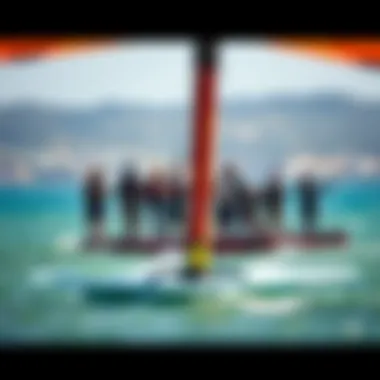
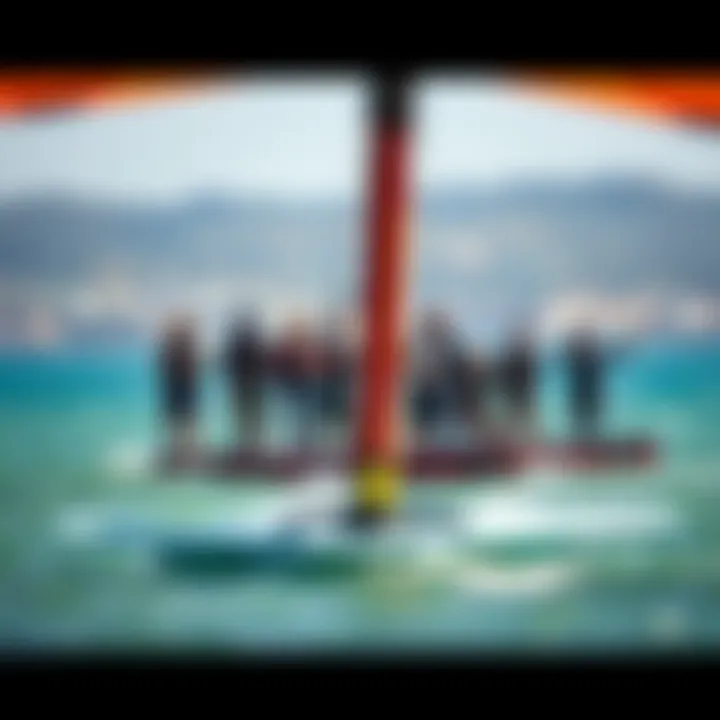
- Durability Reports: Users frequently highlight how well gear withstands harsh conditions, giving insights that marketing might overlook.
- Performance Metrics: Comments on glide, stability, and responsiveness can highlight which wings excel under specific conditions.
- Comparative Analysis: Many enthusiasts compare multiple brands, providing a well-rounded perspective that can be invaluable for new purchases.
"The right brand doesn’t just mean getting the latest shiny wings; it translates to embracing an experience that syncs well with your riding style and personal goals."
By paying attention to brands’ reputations and real consumer feedback, you set yourself up for success in figuring out which wing foil best matches your needs. This evaluation process doesn’t just guide your purchase—it enriches your connection to the sport itself.
Economic Impact of Wing Foil Sales
The implications of wing foil sales extend far beyond the simple exchange of money for gear. This segment of the water sports market has the potential to influence local economies, generate jobs, and encourage sustainable practices in the industry. Analyzing the economic impact of wing foil sales unveils a broader narrative that connects enthusiasts with their communities and highlights opportunities for growth within the recreational market.
Contributions to Local Economies
Wing foiling, while relatively new, is creating a ripple effect in coastal areas and communities that thrive on water sports. Specialty retailers that stock wing foils, like those from brands such as Duotone or Slingshot, are emerging. These shops not only supply products but also foster a sense of community through events, lessons, and demos. This translates into increased foot traffic in local businesses, including restaurants and hotels. When kiteboarders flock to a location, the economic benefits are tangible:
- Increased Tourism: Coastal towns can experience a surge in visitors seeking to try out wing foiling, contributing to local economies through tourism spending.
- Job Creation: Local jobs arise, ranging from retail positions to instructors who teach aspiring wing foilers.
- Sustainable Development: As wing foiling gains popularity, communities may prioritize sustainable practices, which natraully supports economic growth alongside environmental preservation.
"Wing foiling is more than just a sport; it's a lifeline for many small businesses near the shores."
The growth of this niche also reflects an evolving consumer base that is willing to invest in quality gear and experiences. This continued investment helps to stabilize small economies reliant on recreational sports and leisure activities.
Environmental Considerations
While discussing the economic impact of wing foil sales, it's essential to consider the environmental footprint of the sport. As with any growing industry, there exists a balance between enjoying nature and protecting it. On the upside, wing foiling often promotes a greater awareness of coastal ecosystems.
- Eco-Friendly Materials: Many manufacturers are now prioritizing sustainable practices, producing wings from recyclable or biodegradable materials. This transition can lead to a more eco-conscious consumer base, willing to pay a premium for products that are kind to the planet.
- Conservation Initiatives: The popularity of wing foiling can initiate funding for local environmental projects, particularly those focused on ocean health and preservation. Collaborations between brands and local conservation groups can amplify this effect.
- Awareness Campaigns: Events and competitions often incorporate environmental awareness into their agendas. Kiteboarders and wing foilers may participate in beach clean-ups or habitat restoration efforts, blending fun with activism.
In summary, while wing foil sales present promising economic benefits, they also prompt a reflective conversation regarding environmental responsibility. The industry's commitment to sustainable practices can enhance profitability while safeguarding the natural beauty that enthusiasts cherish. By intertwining economic growth with ecological stewardship, the wing foiling community can ensure its long-term viability.
Future Predictions for the Wing Foil Market
The future of the wing foil market represents not just potential opportunities but also a significant shift in the landscape of water sports. This segment has been growing at an impressive pace, and understanding these future predictions can aid stakeholders, whether buyers, manufacturers, or enthusiasts, in navigating an ever-evolving industry. Here’s what to consider as we chart the course ahead.
Evolving Consumer Preferences
In the world of wing foiling, consumer preferences are rapidly changing. Traditional water sports equipment has long been dominated by established favorites, but the allure of wing foiling is drawing a different crowd—a crowd that craves versatility and innovation. It’s not just about riding waves anymore; it’s about the thrill of harnessing the wind combined with the freedom of exploration on water.
- Shift Toward Eco-consciousness: More consumers now prioritize eco-friendly materials and sustainable practices when selecting their gear. Brands that adopt green methodologies may find themselves in a favorable position.
- Demand for Customization: Riders are looking for equipment tailored to their style. Options for custom designs, shapes, and sizes are becoming increasingly important. This leads to a recommendation for brands to expand their offerings accordingly.
- Social Media Influence: Platforms like Instagram and TikTok play a crucial role in shaping trends in water sports. The visually striking nature of wing foiling means that successful brands will leverage these platforms not only for marketing but also for gathering consumer feedback.
As these preferences continue to evolve, staying attuned to what the riders are asking for will be essential for brands aiming to keep their competitive edge.
Impact of Technological Innovations
Technological advancements have revolutionized the wing foil experience and will continue to do so. The rapid evolution in materials and design is enabling lighter, stronger, and more efficient gear, which is vital in attracting new enthusiasts to the sport.
- Advanced Materials: Innovations in composite materials are leading to equipment that performs better while reducing overall weight. Companies utilizing materials like carbon fiber and high-performance plastics are expected to set new standards in the market.
- Wing Design Enhancements: Aerodynamic designs are improving lift and providing better stability. This is particularly crucial for beginners who may be intimidated by more traditional methods of water sports.
- Smart Technology Integration: Devices with built-in sensors and Bluetooth technology that monitor performance metrics are also on the rise. These innovations not only provide valuable insights to the rider but can also enhance safety by monitoring environmental conditions.
"In the arena of water sports, it is the innovation that will steer the boat towards an optimized experience, not just for professionals, but also for those stepping in for the first time."
As these technological advancements become mainstream, they’ll likely change the buying habits of consumers who are curious about how these innovations can enhance their overall experience on the water.
In summary, as the wing foil market propels forward, both evolving consumer preferences and technological innovations will play pivotal roles in shaping its future. Stakeholders must keep their ears to the ground, recognize shifts in the wind, and be dynamic to meet what the riders truly seek.
Culmination and Key Takeaways
Wrapping things up, this journey through the wing foil market isn’t just a casual browse; it’s a deep dive into a thriving segment of water sports that promises growth and innovation. A key element of this article is the understanding that wing foiling is more than just a trend; it’s a movement fueled by diverse consumer preferences and evolving technology. The insights gathered herein can help both enthusiasts and industry stakeholders navigate the complexities of gear selection and market dynamics.
Recap of Market Insights
In the ever-shifting landscape of wing foiling, several trends have emerged that are noteworthy for potential investors and consumers alike. First, there’s the growing popularity of lighter, more versatile wing foil designs. This is largely driven by consumer feedback, which indicates a strong preference for equipment that enhances performance while minimizing fatigue, particularly in challenging conditions.
Also, regional sales patterns have hinted that areas with robust water sports communities are seeing a boom in wing foil-related purchases. Factors such as local climate, accessibility to water sports facilities, and even social media influence play pivotal roles in informing potential buyers about new gear.
On the technological front, advancements in materials and construction techniques are not just bandwagon trends; they’re vital. The introduction of robust composite materials is allowing manufacturers to create more durable yet lightweight gear, directly impacting user experience. Ultimately, potential buyers have a myriad of options at their disposal, from different designs suited for various skill levels to eco-friendly materials that align with environmentally conscious values.
Advice for Potential Buyers
So, you’re tempted to take the plunge into the world of wing foiling? Here’s what you might want to keep in mind:
- Research, Research, Research: Thoroughly investigate brands and models that pique your interest. Engage with fellow kiteboarders on platforms like Reddit or dedicated Facebook groups. Knowledge is power, and insights from others can guide your purchase decision.
- Test Before You Buy: If possible, try out multiple equipment options before settling on one. Many local shops offer demo days that can allow you to feel the differences between wings. This firsthand experience is invaluable.
- Consider Your Environment: Think about where you’ll be using the equipment most frequently. The foil that excels in flat water may differ from one that performs well in choppy seas. Conditions matter, and aligning your gear with your environment will lead to better performance.
- Think Long-Term: Quality matters more than ever. Investing in equipment that stands the test of time can save you money down the line. Brands with solid reputations, backed by consumer reviews, can often be a safer bet than new or lesser-known brands.















